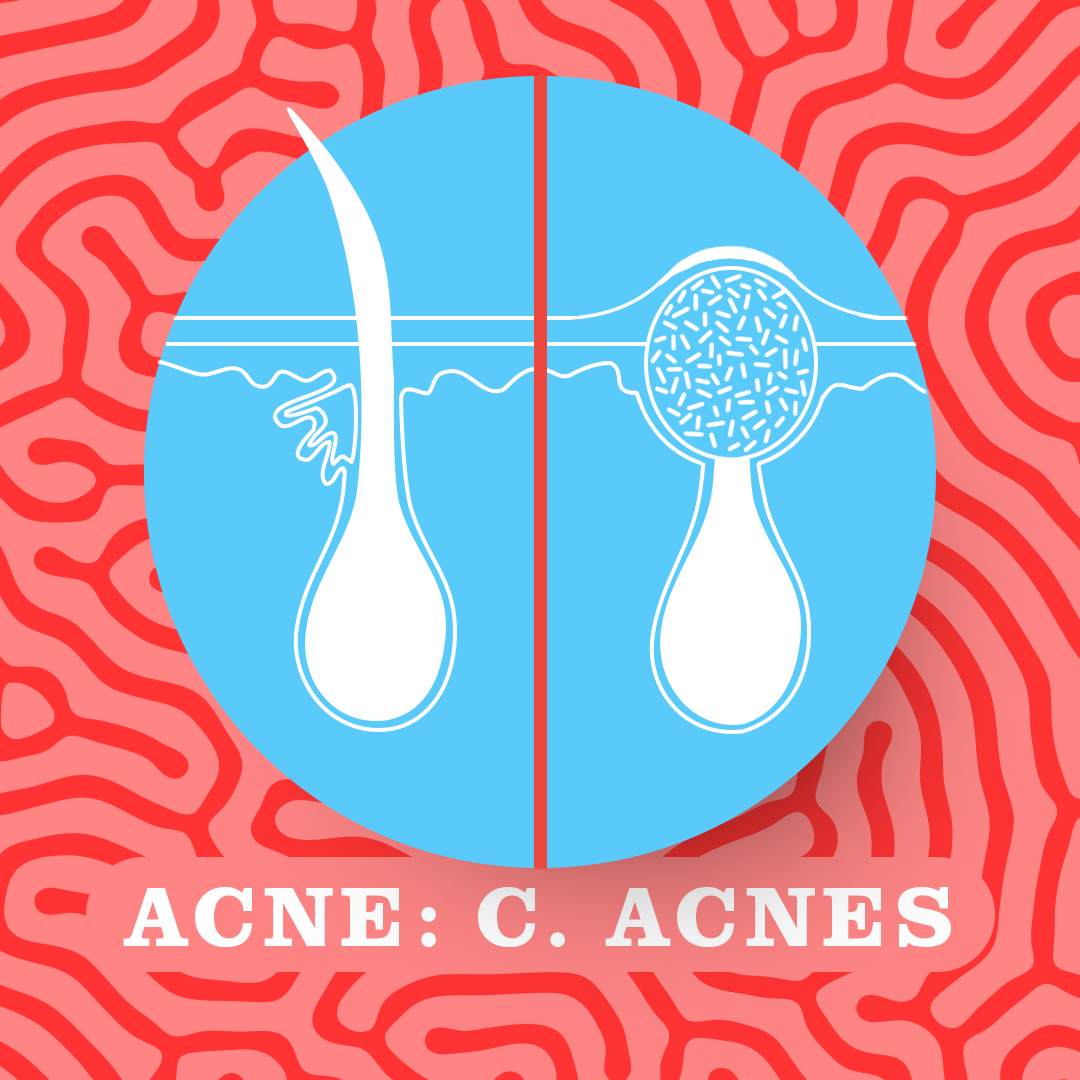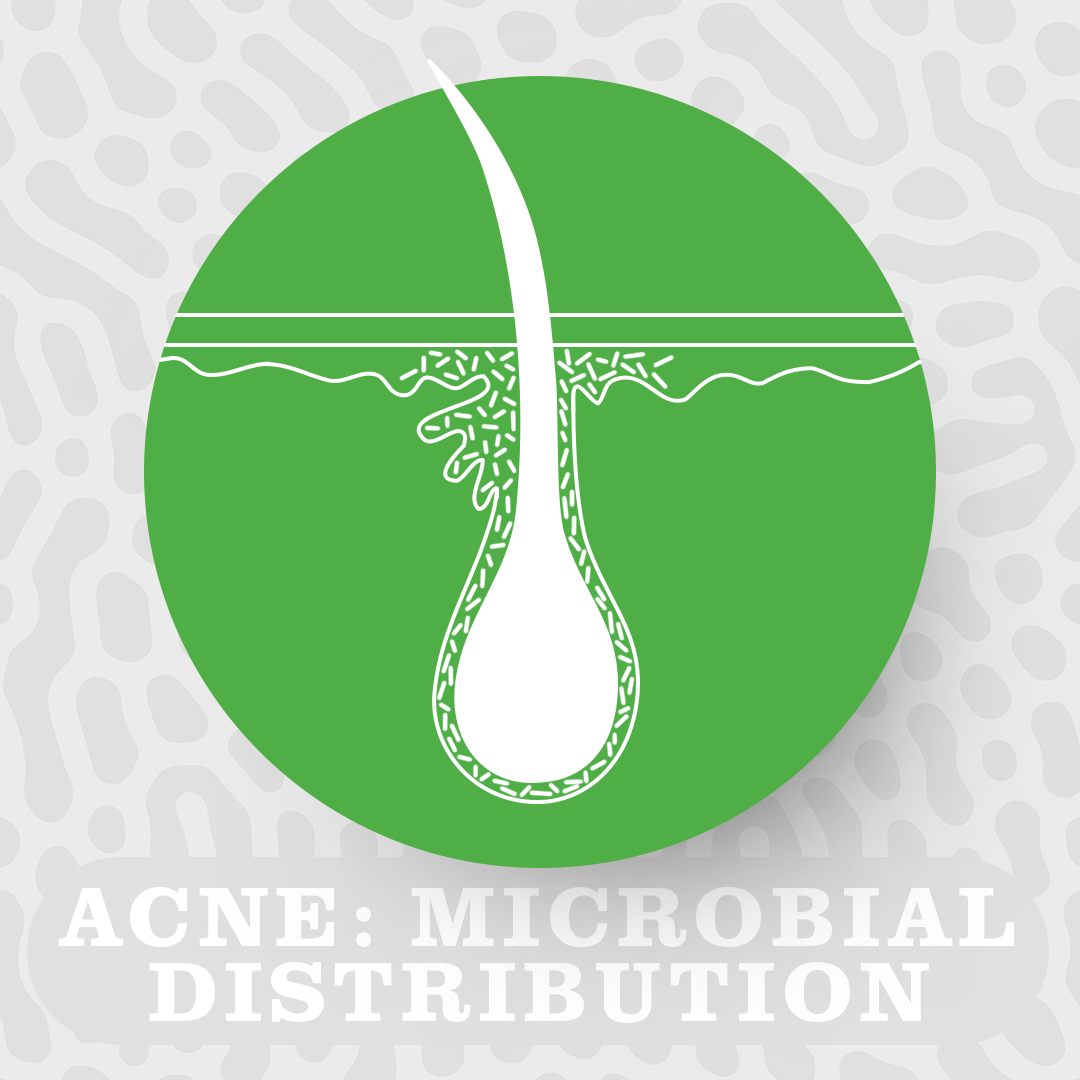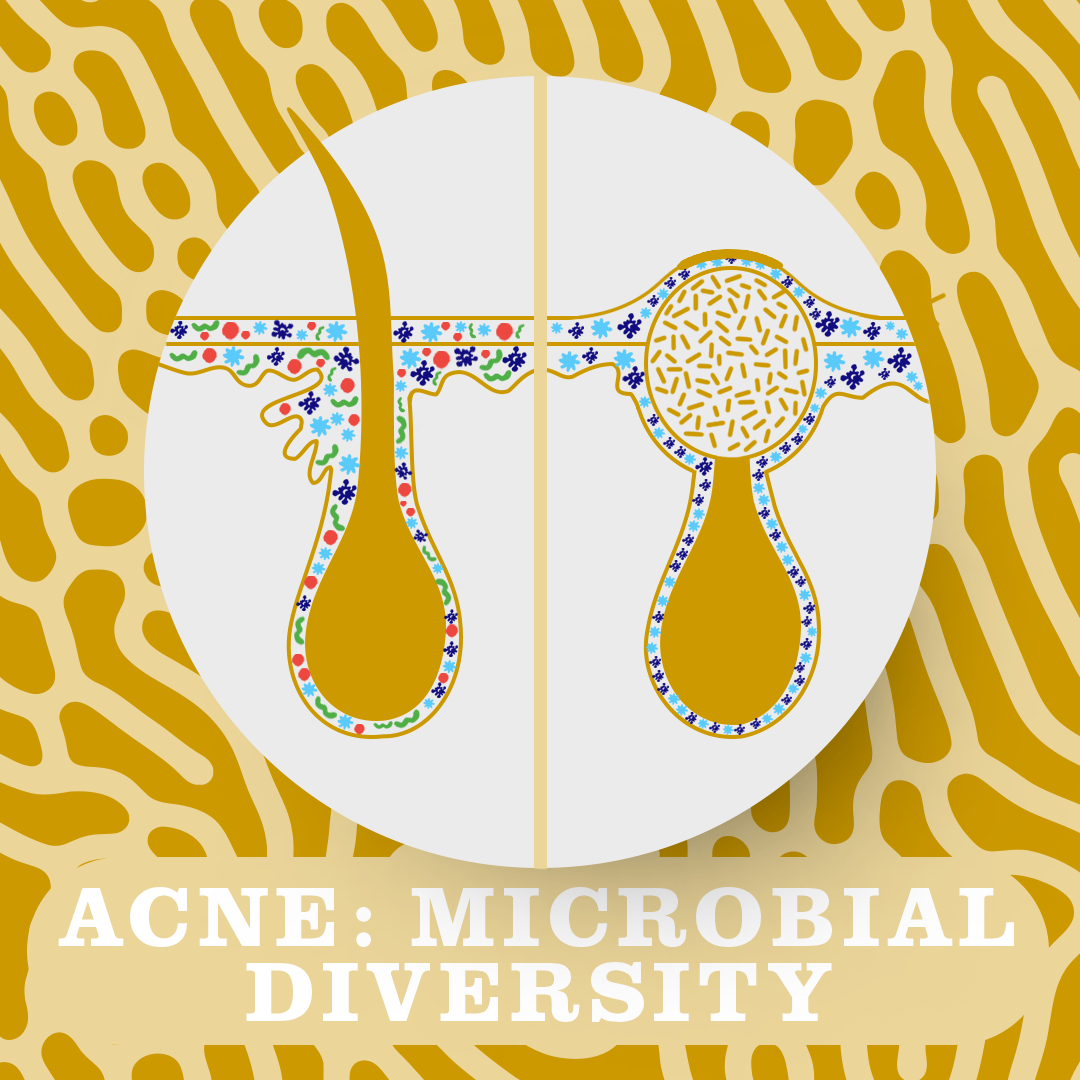Acne is a multifactorial chronic inflammatory condition that causes spots and pimples as a result of clogged or plugged pores (by dead skin cells, oil, dirt) beneath the skin surface.
As many of us may remember, it is particularly common during – but certainly not limited to – puberty!
Acne – what causes it?

A great deal of research has gone into acne and, while techniques in research have come far, we still do not truly understand what causes it.
Different sources claim a number of causes: a Western diet, genetics, and Cutibacterium acnes (formally Propionibacterium acnes) bacteria have all been linked to its development. Whether or not C. acnes is behind the condition has long been a cause for debate – from its relevance at all to whether it is the bacterium or its products that are at the center of the disease with results from various studies providing inconsistent findings.
Even now, there is no definitive answer. It is near impossible to get a clear picture of how acne comes about due to the biological complexity and dynamic nature of the skin microbiome, technical difficulties in replicating the development of acne in the lab, and the ability of C. acnes to be both commensal (healthy) and pathogenic (causing of disease).
Studies have shown that acne originates in the interplay between the skin and the microbiome at the sebaceous gland level, which causes inflammation. However, no single cause has been identified. It is likely that a combination of factors – such as diet and genetics – play a role in the pathophysiology (physiological processes behind the disease) of acne.
Ref: Ochsendorf, 2019
Acne and microbial community distribution

One review examined existing literature on the topic and found it tenable that acne development involves changes in distribution of specific bacterial strains.
C. acnes has been implicated in acne as it is the dominant species present at sebaceous skin sites (follicles and epithelia) where acne occurs. Furthermore, studies have shown that interactions between C. acnes and other skin bacteria, such as S. epidermis, are important for skin health. While part of the healthy microbial ecosystem, at different times and under different circumstances, C. acnes can be pathogenic.
This shift from healthy to pathogenic has been associated with various external and host factors. However, researchers have noted challenges in the various methodologies used within acne studies. As a result, quantifiable changes in microbial distribution have not yet been clearly observed.
Identifying whether the skin microbiome is a cause of acne or only exacerbates the condition through microbe-host interactions, requires further large-scale, robust studies and investigation to draw clear conclusions.
Ref: Ramasamy et al, 2019
Acne and microbial diversity

Beyond specific bacterial species, the loss of microbial diversity amongst the healthy microbiota has been linked to acne and other inflammatory skin disorders. Inflammation is a key step of acne at each level of its development, even to scars.
Looking again at C. acnes, a 2019 in vitro study examined the effect of C. acnes strain diversity on levels of immune activation. The researchers cultured healthy skin with lysates (the mixture of substances resulting from the breakdown/fermentation of bacteria) of different C. acnes strains and evaluated the levels of innate immune system activation – the arm of the immune system which leads to inflammation. They compared the impact of culturing with individual strains against using a mixture; the mixture replicating the diversity found in healthy skin.
The outcome revealed that the loss of diversity in strains of this bacterium triggered the activation of the innate immune system.
While supporting C. acnes’ involvement in acne, the link between diversity and inflammation also provides possible routes for treating acne – and potentially other inflammatory conditions – by promoting and maintaining microbial diversity.
Ref: Dagnelie et al, 2019
Want to explore more of the body? We wrote about the human microbiome and the unique makeup of microbes that each of us has on our bodies. Also, check out our Instagram page for more!
